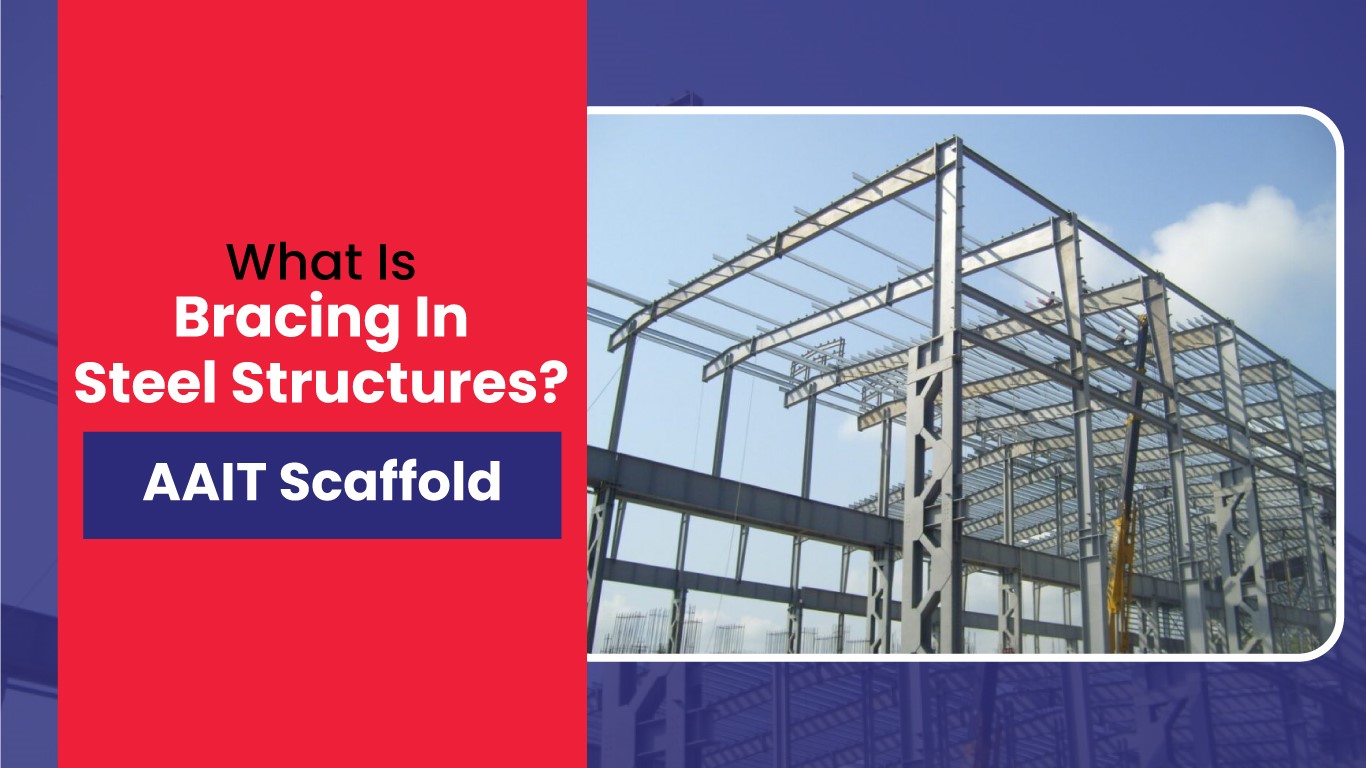In today’s world, bracing is nothing but a technique that makes a framework stable and stronger. As workers incorporate vertical or diagonal columns, these help to connect diverse structural elements. Thus, these can resist lateral forces due to the wind. But, go through this article to understand the role of bracing in steel structures. The article will also take you through types of bracing and the design principles.
What is a braced frame structure in Construction?
A braced frame is known to be a system that offers resistance to certain forces. These may be due to strong winds or activities that cause vibrations. Way ahead, the structure enhances the building’s strength. Now, let’s check the characteristics of bracing.
- As workers set up the bracing, they ensure that the members don’t sway laterally. Since these are made from structural steel, they can be used in compression and tension.
- While the bracing system sustains lateral loads, the beams transfer vertical loads. Mostly, the bracing is made from high quality steel or a concrete core.
- At times, it can be problematic to set up the braces. They can interfere with the building’s design and the placement of openings. Apart from everything else, braces are economical to build.
What is a bracing steel system?
Contractors can’t do away with bracing in steel structures. Its role is also important in the case of steel gate structures. As the entire system ensures stability, the lateral forces are transferred to the foundation. Even when they are used for complicated structures, they adjust the stiffness of the overall structure. This eventually ensures that the stress is distributed rationally. The structural integrity is also enhanced to a considerable extent.
Vertical and horizontal bracing systems
Such bracing systems are used when the structure has to be protected against horizontal forces. So, let’s check out these in detail.
Vertical Bracing
Bracing between vertical planes transmits the horizontal force to ground level. But, to resist the torsion along the vertical axis, there’s a need to set up a minimum of three places of bracing.
Horizontal Bracing
When horizontal bracing is set up at every level, they transfer the forces to vertical bracing. But, even though the floor system may offer ample resistance, workers have to set up such bracing at every level. Moreover, the roof may also need bracing at some or another instance.
Types of Steel bracing in steel structures
Now, let’s check some common braces used at construction sites.
Single diagonals
While setting up this bracing, workers place diagonal bars into the rectangular sections of the frame. This, in turn, makes the frame quite stable. But, in case a single brace is used, then it has to offer resistance to compression and tension.
Cross-bracing
When two diagonal members are used, they form a cross. Hence, the bracing is known as cross bracing. As soon as these are set up, they need to be resistant to tension. Moreover, they have to sustain the force that gets applied from the sides. But, if cross bracing is set up on the building’s facade, then individuals will not be able to open the windows properly. Way ahead, such bracing also leads to bending in the floor beams.
K-bracing
Under this structural support system, the resistance to lateral forces is considerably enhanced. As the support system is erected, some braces are placed diagonally. These connect the vertical columns and form a ‘K’ shape. As the configuration transfers the load effectively, it improves strength and rigidity.
V-bracing
Whenever workers are erecting V-bracing, two diagonal bars are placed to form a V shape. As these are placed, they extend from the corners of a horizontal member. Furthermore, such members meet the lower member at the center. But, if the diagonal bars meet at a central point of an upper horizontal member, then it’s inverted V-bracing. Regardless of what the workers set up, both systems reduce the buckling of the compression brace.
What are the principles for designing bracing in steel structures?
When you’re designing bracing, here are the principles you must follow.
- During the design phase, you must reduce the path through which the load is transmitted.
- Apart from ensuring stability, lateral support points must also be offered.
- Once designed, the bracing should meet rigidity and strength requirements. Hence, it’s essential to conduct quality checks after the design phase.
- While the requirements are met, the bars should enable you to establish secure connections. Moreover, the workers must not find it challenging to install the overall structure.
- When cross bracing is considered, it must be easy to install them properly. If that’s not the case, it can drastically reduce the load bearing capacity of the structure.
As bracing is an essential component, you have to get in touch with an experienced construction company. These will adhere to the design principles while offering high-quality columns / bars.
Why is Bracing set up?
There are many benefits to setting up bracing in steel structures. Let’s check these ahead.
Controls Buckling
The prime purpose of bracing is to control buckling in the main beams. Buckling can occur when the structural member becomes unstable. This condition is likely to occur under compression loads. But, with the incorporation of bracing systems, a framework is created. Such a type of framework resists several forces.
Load Distribution
Bracing systems play an important role in distributing the load effectively. As the load is transferred to the beams, it passes to the foundation. This mitigates the concentration of stress and prevents structural damage. Once the forces are evenly distributed, braces also help to maintain the framework’s integrity. You will also not notice any significant failure or deformation.
What Are Bracing Plans?
Every contractor has to come up with a plan for a braced frame structure. This can help to distribute or place the various components to sustain the forces. To ensure quality, the team also has to work closely with skilled professionals. These can present the plan through CAD software. But, many things have to be taken into account before presenting a plan.
- If the structure has a timber frame, then the columns have to be placed parallel to the walls.
- While proceeding with the setup, the columns also have to be placed uniformly.
- During the development of timber-framed floors, it must be possible to transfer the load along the construction lines.
- While engineers follow the plan, the bracing must run in two different orthogonal directions.
- Bracing plans should further be able to accommodate various elements. Such elements must be in their respective positions along the lines.
Conclusion
Finally, if you’re seeking scaffolding equipment, then you can get in touch with the team at AAIT Scaffolds. While we have served our clients over the years, we offer reliable scaffolding solutions. These have met the requirements of many companies in different industries. Our equipment can be used not only in the construction domain but also while carrying out maintenance work.












 Download
Download
Comments are closed